Do Marmots Swim? Understanding Marmot Behavior and Adaptations
Marmots are giant rodents. But they are the prey of a large group of predators. So, they adapt themselves to nature in such a way that will help their survival. For example, they can live in burrows and climb trees. Jumping on the water is another way of their defense.
But do marmots swim? Marmots can swim quite efficiently when searching for food or trying to escape predators. Sometimes, in hot weather, they swim to maintain the appropriate body temperature.
In this article, we will discuss marmot swimming behavior. You will also learn about their swimming efficiency and limitations. So, keep reading.
Can Marmots Swim?
Marmot habitat preferences are such that those places can provide a better escape from predators. They mainly prefer forests, meadows, and mountain habitats. Also, you can see them near aquatic habitats in wildlife photography of marmots.
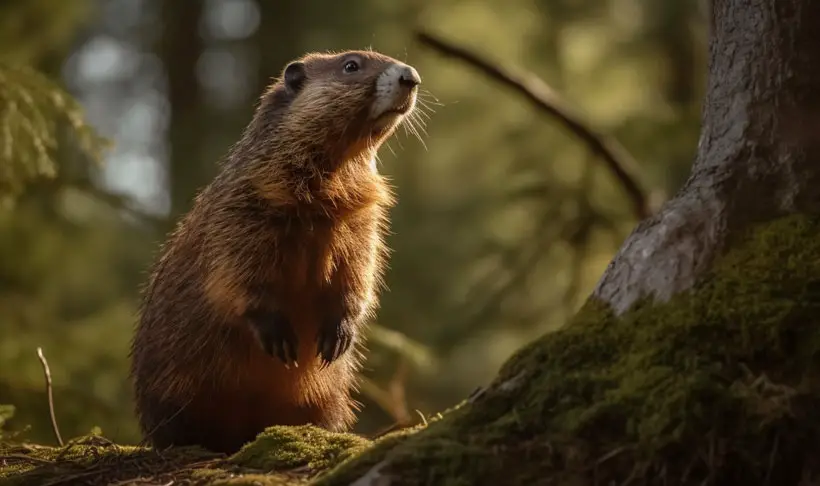
Though marmots are not aquatic animals, they can swim perfectly. Mainly, groundhogs are most familiar as swimmers among all marmot species.
Marmot Aquatic Adaptations
Ground squirrels have several unique body characteristics and adaptations that help them in swimming. Those are:
- Marmot’s paws and tail help to keep them afloat on water
- They can tolerate the low water temperature while swimming
- Their excellent lung capacity allows them to hold their breath underwater
- Marmot’s oxygen requirements are less, which also helps them to hold their breath underwater
Reasons For Marmots’ Swimming Or Being In Aquatic Environments
Usually, marmots only get into the water to search for food, escape from predators, and cool themselves.
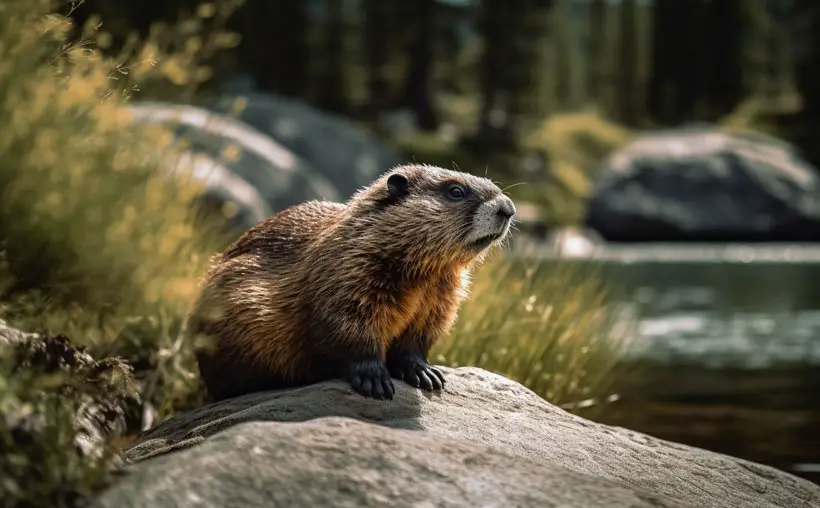
In Search Of Food
Ground squirrels are herbivores, but they can also eat bird eggs, tiny snails, etc. When they can’t find adequate food on the ground, they will jump into lakes or ponds for food. These water sources provide alternative food sources like small plants and snails all year round.
Escape From Predators
Typically, ground squirrels make burrows to escape from predators. But, sometimes, the predators may block the entrance of their burrows.
Generally, in mountain ecology, ground animals like Foxes, Coyotes, and Rapture are primarily their predators. These types of predators are not fond of water, so diving into the water is a wise decision for marmots.
For Cooling Themselves
Ground squirrels can’t tolerate temperatures more than 60-80°F. If the temperature gets higher, they might even die due to overheating. That’s why, on hot days, they might take a bath in water to cool off.
Limitations To Marmot Swimming Ability
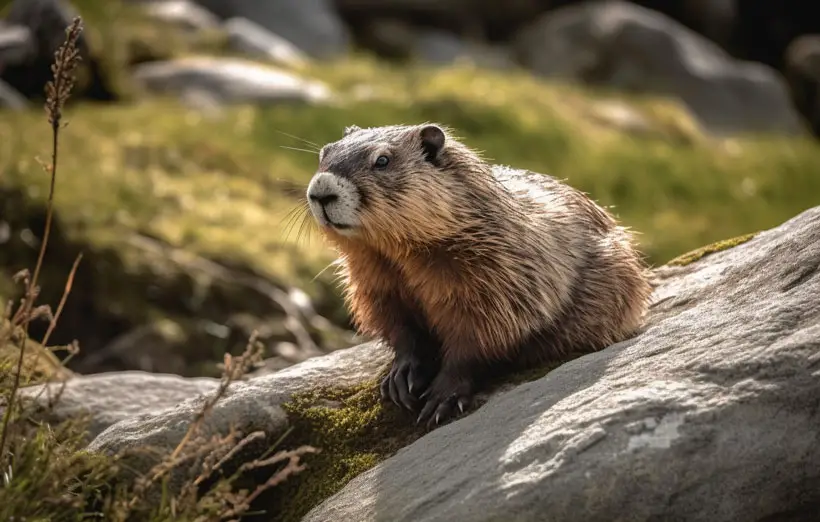
A few factors reduce the capability of the marmot’s swim. Here are the limitations of marmot swimming behavior:
- You will find several mammal behavior characteristics in ground squirrels. Also, like any other mammal, they don’t consist of any particular organ for breathing underwater. That’s why they can’t breathe underwater.
- They can only hold their breath for likely 5 minutes. This allows them to swim only around the shorelines.
- If they keep swimming for a long time, they may get drowned and die eventually due to tiredness.
Are Marmots Excellent Swimmers?
Marmots are more excellent swimmers than any other rodent species. But, marmots’ swimming ability varies with their species. Typically, a groundhog species can swim at almost 1.86-2 mph. However, they don’t swim a long time.
If you look at their physical attributes, you can see tiny legs, fat and big bellies. These attributes may seem unsuitable for swimming. But, interestingly, their paws help them to float in the water.
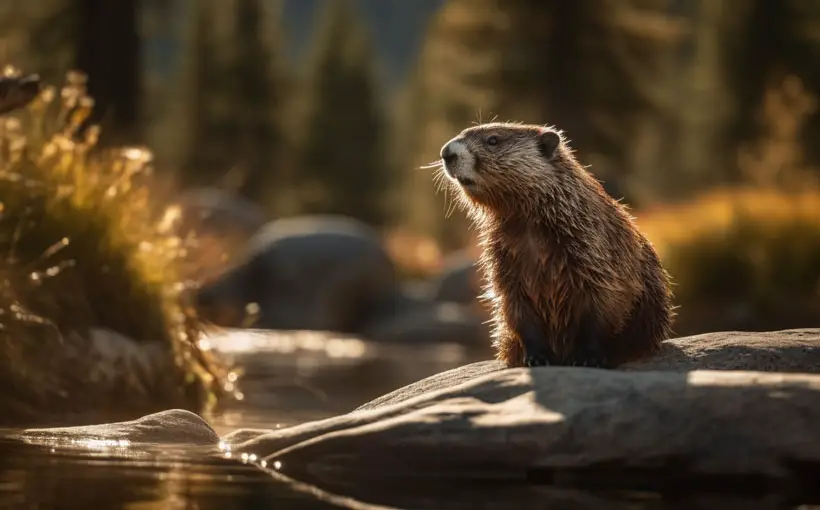
Besides, their paddles will help them to sail forward. Moreover, they can also navigate excellently while swimming. Also, ground squirrels can use their tails to protect themselves from the attack of predators. While swimming, they can hit their enemies with their tails.
They can also create an intense splash of water by slamming their paddle-like into the water. But, typically, they don’t like water. That’s why they will shake the water off their body as soon as they get out of the water.
Are Marmots Capable Of Diving Underwater?
Marmots can dive into the water when their predator is a water animal, but it happens rarely. When the predator can also swim, only swimming can’t help marmots that much.
So, they will need to dive deep into the water for survival. In this case, they will take a long breath before diving into the water. Due to the impressive lung capacity, the lung won’t tire.
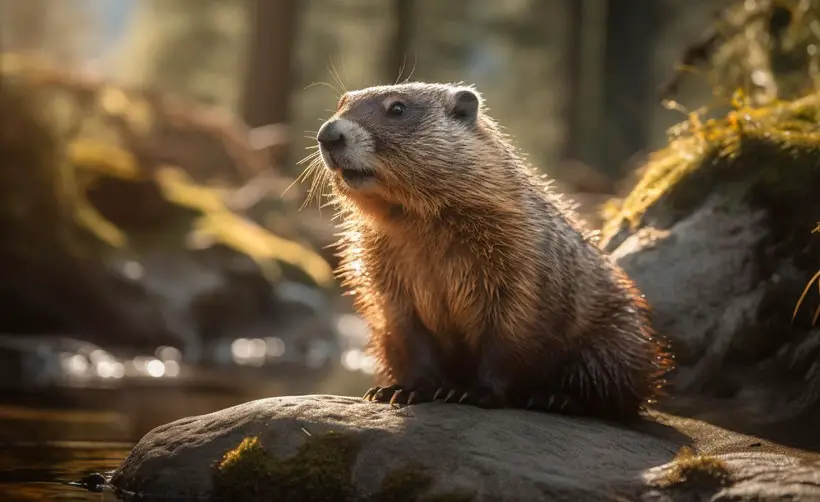
Also, a prime marmot adaptation is they have low oxygen requirements. So, this helps them to hold their breath for some time. This time allows them to find their food underwater or sometimes stay until predators leave.
But their lungs also have a limit. So, the ground squirrel won’t be able to hold their breath for more than 4-5 minutes. Hence, in ordinary cases, they will only swim around the shoreline to get out of the water quickly.
Marmots are fascinating creatures that are known for their ability to hibernate for long periods of time. However, did you know that they are also skilled swimmers? Our article on marmot vs ferret provides a detailed comparison of these two animals, while our article on what does a marmot look like delves into their physical characteristics and appearance. If you’re interested in learning more about these fascinating rodents, be sure to check out these articles!Conclusion
Though marmots don’t like water, they are not scared of it. They can swim pretty well and can even dive underwater. Due to the differences in their species and wildlife habitat, their swimming efficiency may also vary.
By the way, they mostly swim for food and to escape from predators. If they have the opportunity not to swim, they will roam on the grounds, in general.





